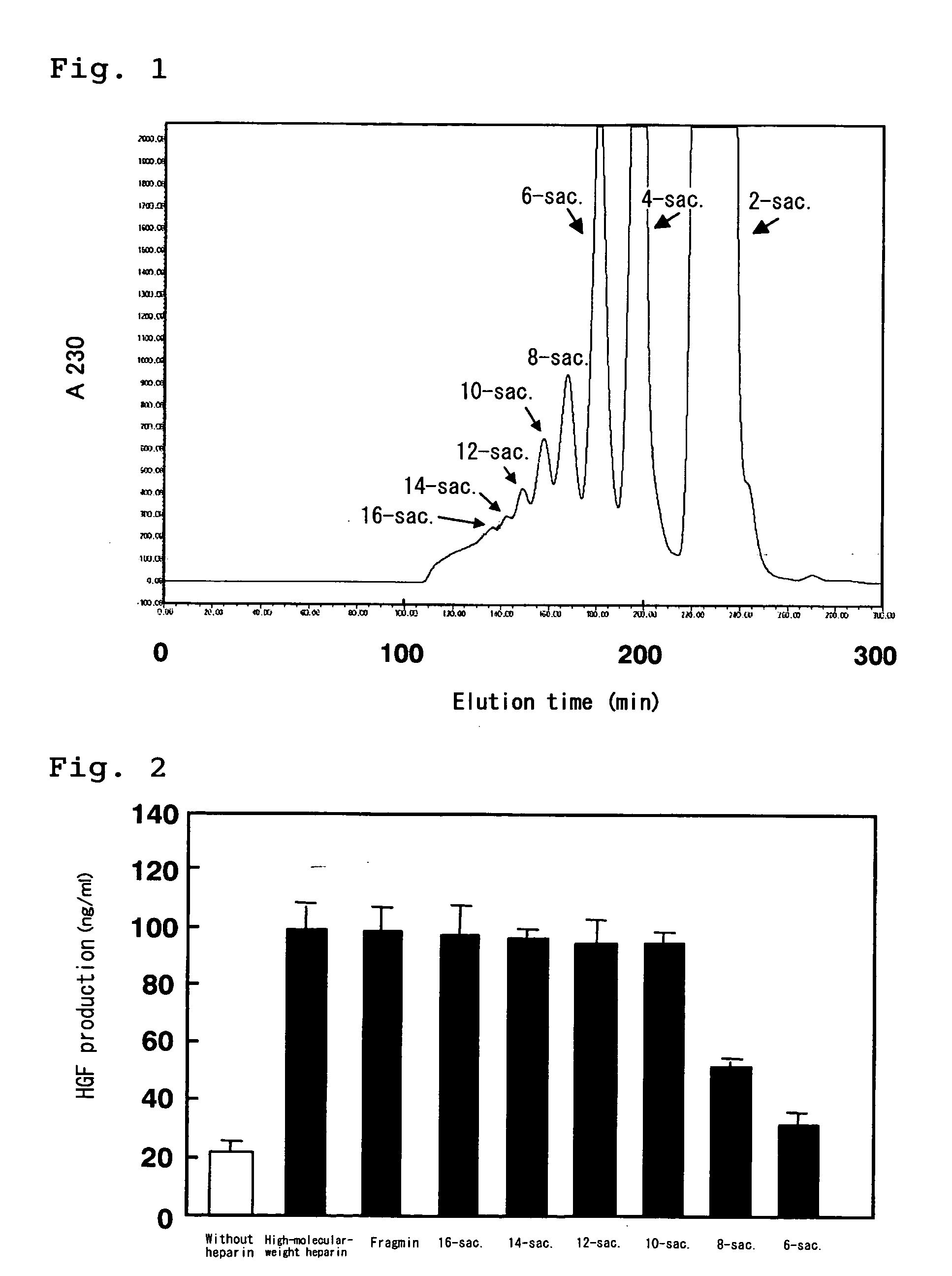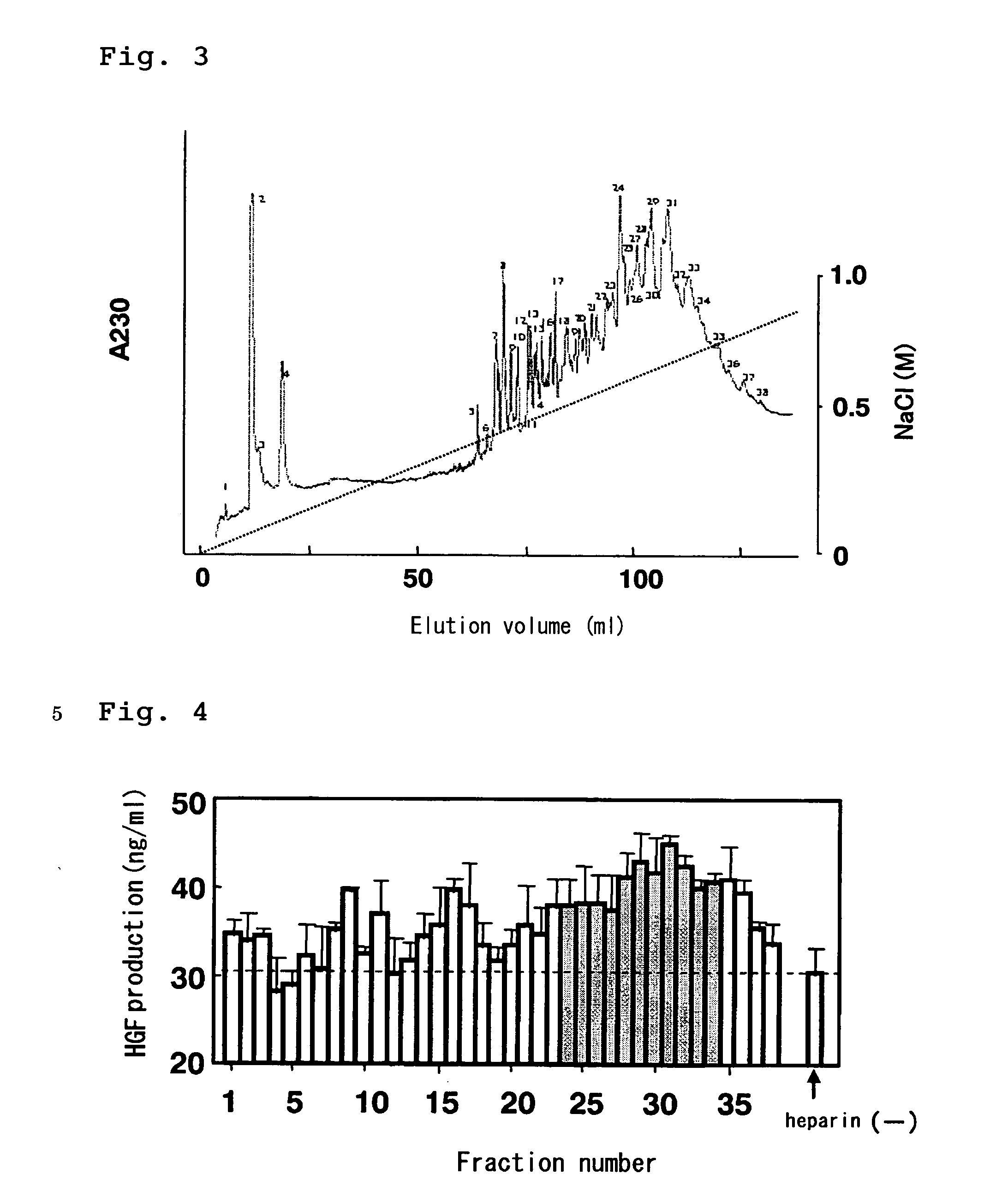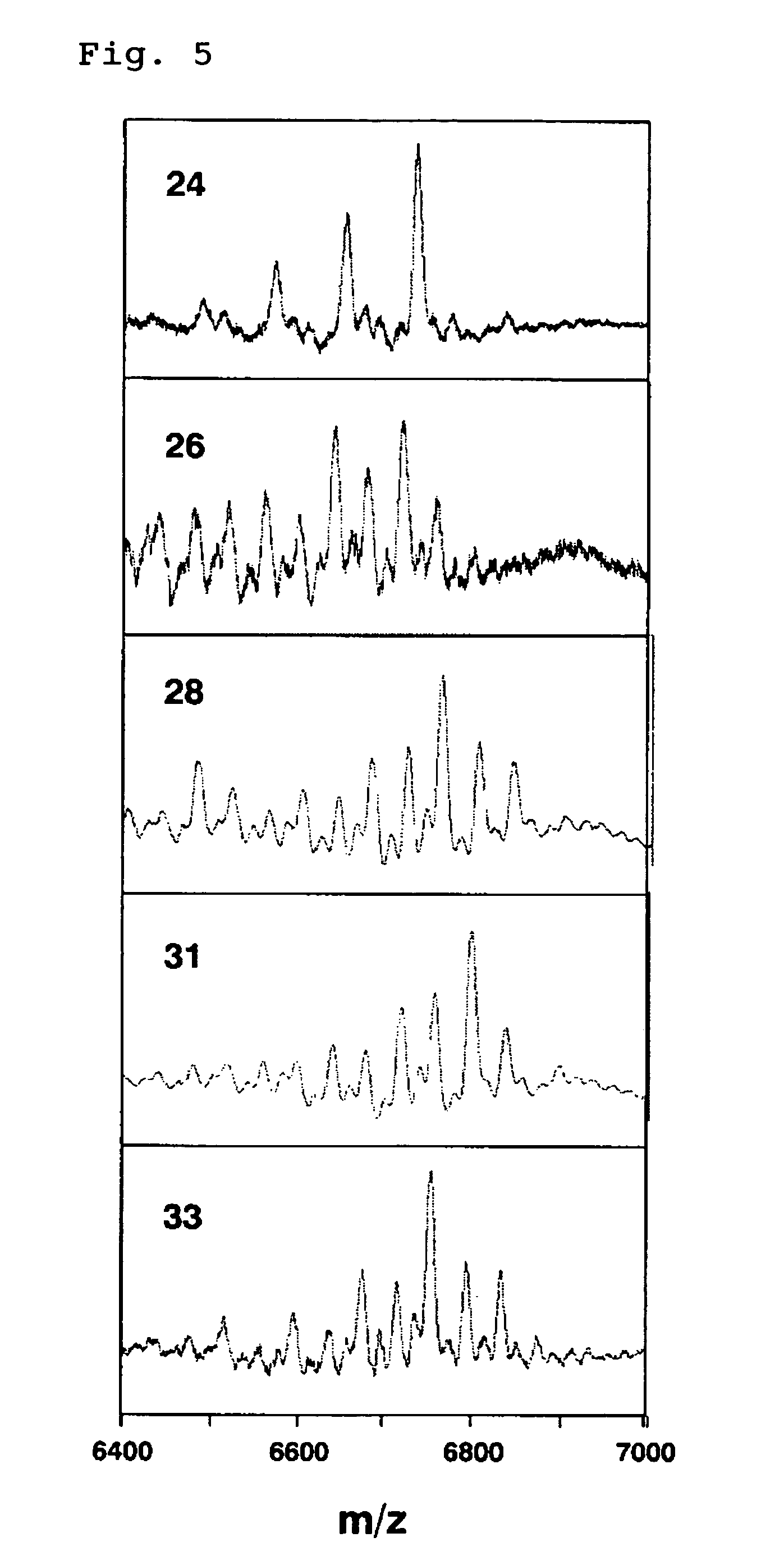Hgf production accelerator containing heparin-like oligosaccharide
a technology of heparin-like oligosaccharide and accelerator, which is applied in the direction of antibacterial agents, antinoxious agents, extracellular fluid disorders, etc., can solve the problems of bleeding tendency, side effects, and difficulty in discriminating between the two families, and achieve no or less side effects of bleeding tendency, promote hgf production, and promote hgf production
- Summary
- Abstract
- Description
- Claims
- Application Information
AI Technical Summary
Benefits of technology
Problems solved by technology
Method used
Image
Examples
example 1
[0146] 100 mg of high-molecular-weight heparin Na (Scientific Protein Laboratories Inc.) was dissolved in 2 mL of 50 mM sodium acetate buffer (containing 3 mM calcium acetate) (pH 7.0), and 0.5 unit of heparinase (SEIKAGAKU CORPORATION) was added to the mixture to react them at 37° C. for 10 hours. The reaction mixture was heated at 100° C. for 2 minutes to stop the reaction. 0.3 mL of the supernatant of the reaction mixture was subjected to a Superdex 30 pg column (φ1.6 cm×60 cm) (Amersham Bioscience) to perform gel filtration chromatography. As a mobile phase, 200 mM aqueous ammonium bicarbonate solution was used, and the solution was passed at a flow rate of 0.4 ml / min. Absorbance of the eluate at 230 nm was monitored, and the eluate was fractionated. Heparin fragments were separated and recovered on the basis of molecular size. The heparin fragments were obtained as oligosaccharide fractions of disaccharides, tetrasaccharides, hexasaccharides, octasaccharides, decasaccharides, d...
example 2
[0147] Activities to promote HGF production of the heparin fragments (oligosaccharides) obtained in Example 1 were measured by using MRC-9 cells, human fetal lung fibroblasts. The cells were cultured with heparin fragments(oligosaccharides) and amounts of HGF produced by the cell were analyzed. First, MRC-9 cells were seeded onto a 48 well plate at a density of 5×104 cells / cm2, and cultured in a DMEM medium containing 10% FCS for one day. After removing the medium, the cells were washed twice with 0.5 mL of PBS, and the medium was exchanged with a DMEM medium containing 1% FCS. Thereafter, the culture was continued. At this time, the heparin fragments obtained in Example 1 were added to the medium at a final concentration of 1 μg / ml. After 24 hours, the culture supernatant was recovered, and an amount of HGF secreted into the culture medium was measured by the ELISA method. When a commercially available low-molecular-weight heparin (Fragmin, Kissei Pharmaceutical Co., Ltd.) was adde...
example 3
[0148] The decasaccharide fraction of heparin fragments (hereinafter referred to as heparin decasaccharide fragments) obtained in Example 1 was freeze-dried and re-dissolved in water. The resulting solution was subjected to a MiniQ 4.5 / 50 column (Amersham Bioscience) to perform anion-exchange chromatography for further separation. The heparin decasaccharide fragments were eluted by linear gradient elut ion, in which aqueous NaCl was used as an eluent (flow rate: 0.5 ml / min) and the concentration of NaCl was linearly increased from 0M to 1M. Absorbance of the eluate at 230 nm was monitored and fractionated (FIG. 3). The heparin decasaccharide fragments were separated as many peaks supposedly due to variation of the number and the positions of sulfate groups, and the individual peaks were recovered. The recovered fractions were numbered 1 to 38, and the activity to promote HGF production of each peak was measured in a similar manner to Example 2 (FIG. 4). The result showed that most o...
PUM
| Property | Measurement | Unit |
|---|---|---|
| molecular-weight | aaaaa | aaaaa |
| flow rate | aaaaa | aaaaa |
| body weight | aaaaa | aaaaa |
Abstract
Description
Claims
Application Information
 Login to View More
Login to View More - R&D
- Intellectual Property
- Life Sciences
- Materials
- Tech Scout
- Unparalleled Data Quality
- Higher Quality Content
- 60% Fewer Hallucinations
Browse by: Latest US Patents, China's latest patents, Technical Efficacy Thesaurus, Application Domain, Technology Topic, Popular Technical Reports.
© 2025 PatSnap. All rights reserved.Legal|Privacy policy|Modern Slavery Act Transparency Statement|Sitemap|About US| Contact US: help@patsnap.com



